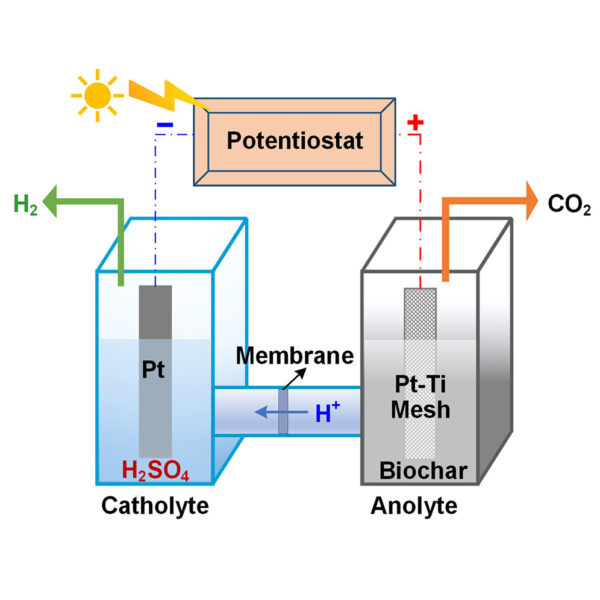By using 600% less voltage to produce hydrogen, a research team from the University of Illinois at Chicago has developed a new method of splitting water.
Researchers at the University of Illinois Chicago (UIC) have developed a new method to produce hydrogen gas from water using solar energy and agricultural waste such as manure or peel. The researchers said the method reduces the amount of energy needed to make hydrogen fuel by 600%. The results are presented in the study “Sub-volt conversion of activated biochar and water for H2 near-equilibrium production via biochar-assisted water electrolysis”, which was published in Cell reports natural sciences.
The method uses a carbon-rich substance called biochar to reduce the amount of electricity needed to convert water into hydrogen. Combined with the use of solar energy or wind to power the water splitting process known as electrolysis.
“We are the first group to show that you can produce hydrogen with biomass with a fraction of a volt,” the researchers said. “This is a transformative technology.”
Electrolysis represents the most expensive step in the hydrogen fuel life cycle, accounting for approximately 80% of the cost. Recent developments in hydrogen fuel production have reduced the voltage required for the splitting of water by introducing a carbon source into the reaction. However, this process often uses coal or expensive refined chemicals, which releases carbon emissions as a byproduct.
The UIC researchers modified the process to use biomass from common waste products as a carbon source instead. By mixing sulfuric acid with agricultural waste, animal waste and sewage, they produced a slurry of biochar that could be used in the reaction.
The team tested various inputs for biochar, including sugar cane husks, hemp waste, paper waste and cow manure. All five inputs reduced the power required to perform electrolysis, but the best performing, cow manure, reduced electrical demand by 600%, to about one-fifth of a volt.
With lower voltage requirements, the UIC researchers were able to produce an electrolysis reaction in which one silicon solar cell generated about 15 milliamps of current at 0.5 V, or less than the amount of current produced by an AA battery.
“It is highly efficient, converting almost 35% of biochar and solar energy into hydrogen,” said Rohit Chauhan, co-author of the report. Chauhan said the biochar utilization rate represents a world record.
The research team said this use of biochar represents a new income stream potential for farmers, or an opportunity to become self-sufficient in energy needs.
Orochem Technologies Inc. sponsored the research and has applied for patents on the biochar-hydrogen process. The UIC team plans to test the methods on a larger scale. Stanford University, Texas Tech University, Indian Institute of Technology Roorkee, Korea University also participated in this study.
This content is copyrighted and may not be reused. If you would like to collaborate with us and reuse some of our content, please contact: editors@pv-magazine.com.


